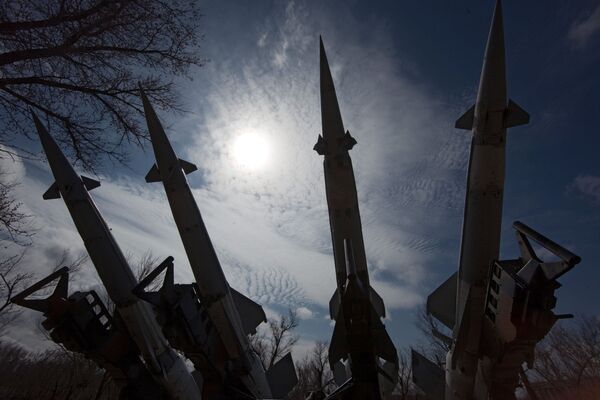The most recent U.S.-Russian arms reduction agreement looks set to become a reality, after all. A bill on the ratification of the new START treaty has already passed through Russia's lower house of parliament, the State Duma, and was approved by the upper house on Wednesday, January 26.
The path toward ratifying the treaty has not been a smooth one, and it is likely to face more difficulties even after it goes into effect. Signed in Prague on April 8, 2010, the new START is meant to replace the first such treaty, which expired in December 2009 fifteen years after its adoption, as well as the 2002 Strategic Offensive Reductions Accord. The latter was a revised version of the second START, signed in 1993, but never ratified.
Under the new treaty, each party is allowed a maximum of 1,550 warheads and no more than 700 deployed intercontinental ballistic missiles, submarine-launched ballistic missiles, and heavy bombers equipped for nuclear arms. Another 100 are allowed if they are not operationally deployed.
The new START is seen as a fair treaty, one that lets the United States continue developing its missile defense system while at the same time allowing Russia to build up its own nuclear forces without feeling threatened by the American missile defense system, at present and in the foreseeable future.
Mutual benefits
Here are some of the treaty's provisions from which Russia stands to benefit:
Unlike the original START, the new treaty sets no limitations on patrol zones for land-based mobile missile systems such as the Topol, the Topol-M and the Yars. Nor does it restrict their deployment zones, in terms of total area or in number.
Also, the accord imposes strict restrictions on the breakout potential and dramatically lowers the launcher ceiling, thereby narrowing the gap between Russia and the U.S. in maintaining their nuclear arsenals. These restrictions apply, among other things, to ballistic missiles with non-nuclear warheads.
Under the new START, the sides are free to establish the structure of their nuclear triads and can deploy new types of missiles and other warhead carriers with prior notice.
One other point advantageous to Russia is that the treaty does not put any limits on the deployment of missiles with multiple independently targeted reentry vehicles (MIRV). Which means the country will retain its arsenal of heavy launchers such as the RS-20 and the RS-18, and will also be able to develop new MIRVs.
The new START bans the deployment of strategic offensive weapons beyond the sides' respective borders. This provision will help prevent the recurrence of something like the Cuban Missile Crisis and will also allow the sides to have greater control over the strategic armaments of the other.
For the United States, the advantages include the lack of limits on the deployment of missile defense systems and sea-launched cruise missiles, as well as the rules for counting warheads on heavy bombers. While each warhead on a ballistic missile is counted as one warhead, a heavy bomber is counted as carrying "one warhead," even though it may carry 12 to 24 of them. Thus, the actual number of warheads will be about 2,100 for Russia and 2,400 for the United States, as the latter holds a larger number of heavy launchers in its arsenal. However, this gap will narrow over time, as more American B-1B bombers will be discharged and converted into non-nuclear weapons.
Concessions on both sides
Despite the obvious advantages for both sides, the treaty has faced harsh criticism both in Russia and in the United States. The arguments put forward by each are remarkably similar - ultra-nationalist groups on both sides of the Atlantic have expressed the concern that the new START makes too many concessions to the other side.
Detractors of the treaty in the United States are above all concerned about the U.S. missile shield, which they think is threatened by the link made in the new START between defensive and offensive weapons. Whereas opponents in Russia are most unhappy about the treaty's lack of legally binding provisions to limit the development of such missile defense systems.
There has also been criticism of the lack of restrictions on the number of sea-launched cruise missiles and the rules for counting warheads on heavy bombers.
The sides have gone ahead with the ratification, but each has provided itself with certain safeguards. The U.S. Senate has adopted a resolution to ensure that no limitations will be set on its missile defense shield. The Russian legislature, meanwhile, has reserved the right to withdraw from the treaty in case the nuclear missile parity between Russia and the U.S. is upset.
Despite all these reservations, the treaty's original text has remained almost intact. Its enactment will mark a significant step forward in U.S.-Russian relations over the last three years.
Hopefully, Russia and the U.S. will not lose momentum on this even if Barack Obama fails to win re-election in the 2012. A new arms race is the last thing the two nations need.
The views expressed in this article are the author's and do not necessarily represent those of RIA Novosti.



